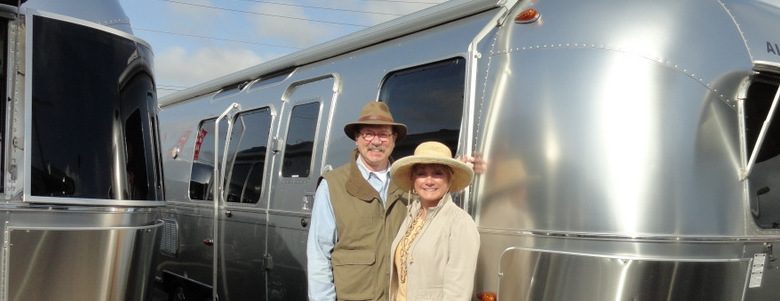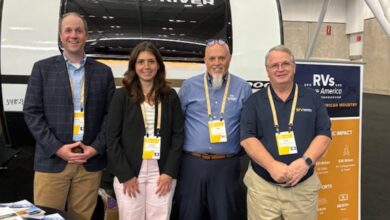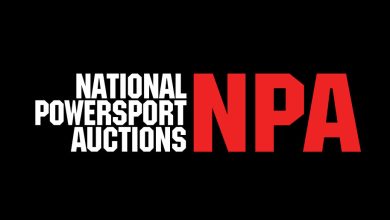Great Recession Survivors, Pt. 2

Editor’s note: This article marks the second installment of a two-part series looking back at the 2008-09 Great Recession’s impact upon RV dealers. The first installment ran in the February issue.
The Great Recession battered all segments of the U.S. economy, but its impact was particularly pronounced on RV dealerships, which retail products that are much beloved by those who use them – but which also remain a discretionary purchase.
In recognition of the Great Recession’s impact upon dealerships, now 10 years in the rearview mirror, RV PRO sought out dealers who survived the economic downturn to find out how it impacted their respective businesses, to chronicle their strategies for staying in business and to share their success stories.
Total Value RV Perseveres in the Eye of the Storm
When the Great Recession loomed large in 2009, Elkhart County, Ind., was firmly in the crosshairs – and so was Hank Schrock’s local family-owned dealership, Total Value RV.
In March 2009, Elkhart County – known as the RV capital of the world thanks to the fact that roughly eight in 10 RVs are built there – saw its unemployment rate top 20 percent. RV manufacturers based there were particularly hard hit by the downturn. Overall manufacturing jobs in Elkhart dropped by nearly half – from about 60,000 in January 2008 to fewer than 37,000 jobs in January 2009, according to U.S. Bureau of Labor Statistics data.
A discretionary purchase even in the best of times, overall RV shipments dropped by 30 percent in 2009 and by more than 50 percent from the market high of 390,500 units in 2006.
Not surprisingly, Schrock says his Elkhart-based business suffered as consumer demand for new RVs plummeted during the tough times.
Still, Schrock says he was determined to persevere, so the dealership “buttoned up” and did more with less, as its employee base shrank from 16 employees down to four.
“If you stay in something long enough, you will be successful,” says Schrock, Total Value’s owner and president. “I wasn’t about the let my livelihood go away – and I had everything on the line in 2008 and 2009.”
He says he invested his own money into Total Value RV to keep it running and worked closely with motorhome manufacturer Damon RV (now part of Thor Motor Coach).
“Damon RV was very understanding and worked with me,” he says. “It was what it was.”
Total Value RV endured some tough times until 2012, when business began to pick up. Today, the dealership is in expansion mode, having purchased and cleared land to increase its lot size and increase its inventory level.
“We’ve grown more in the past two-and-a-half years than in the history of our company,” says Schrock. “At the end of the Recession, we went from 16 to 32 employees. Demand exploded, and it was hard to get people into place so fast.”
Being located so closely to both the Thor and Forest River manufacturing facilities has always been a benefit to Total Value, as it reduces prep, title, license and other fees for customers. Still, it was a bit of a mixed blessing when the market for RVs rebounded and manufacturers began a hiring frenzy.
“Manufacturers were grabbing all of the people,” Schrock explains.
Eventually, however, the dealership was able to add salespeople and put in place a slate of administrative personnel and service techs to meet consumers’ needs.
As for the future, Schrock is reluctant to predict what lies ahead for the industry, and he notes different dealers have different strategies for being successful in their respective markets.
“It’s hard to project what the future will bring,” he says. “You see a little bit of trickling or a softening, but it hasn’t affected us yet. We’re going to have another good year (in 2019) – ahead of last year.”
And while the market has rebounded from the darkest days of the Great Recession, Schrock says he maintains a mix of optimism and caution, always keeping a watchful eye on his inventory.
“It was a struggle from 2008-09, but it’s slowly gotten better,” he says. “Now it’s a pleasure to be in the RV business. We sell fun.”
Sutton RV Takes a Shrewd Eye to Inventory
Over the years, Eugene, Ore.-based Sutton RV has dabbled in motorhomes. When times were good, the dealership was successful in moving them. But when times were tough, those RVs became a liability.
Having learned this lesson from firsthand experience in the early 2000s, company President George Sutton says he decided to focus on sales of towable units in the years that followed. In 2008, he was especially glad he had made this decision.
“Like everyone else, we didn’t know that our lender was out of money,” he says. “They cut our flooring in half. That’s a hard thing to navigate unless you’re dealing with inexpensive travel trailers.”
Sutton credits his dealership’s survival following the Great Recession, in large part, to his decision not to acquire expensive inventory that he knew would sit stagnant on his lot. The one chance he took was retailing a Bigfoot motorhome with a $130,000 wholesale cost.
“We had a guy come along and offer us $110,000,” Sutton says. “This was the only unit we really had that was putting us in harm’s way. We made payments on the difference, and we were glad to be free of that really expensive motorhome.”
From then on, Sutton kept a shrewd eye to his inventory, having success with Evergreen RV towables and coupling that with Airstream trailers.
“A lot of Airstream dealers had gone out of business by that point,” he says. “Airstream was our saving grace, and having units from both manufacturers really got us through those tough times.”
While the dealership found success retailing Airstreams, demand was often coming from customers outside the local market – and even out of state. That opened an opportunity for Sutton and his wife, Martha, to hand-deliver units to customers in California, Utah, Texas, Montana and even Florida.
“Usually, with sales at our dealership, our employees handled walk-throughs with customers,” says Sutton. “But, as we delivered Airstreams, Martha and I were performing them. Through those experiences, we were taking feedback to our manufacturers.”
As a result, Airstream began consulting with the Suttons to improve the company’s RVs and components. For example, after the Suttons heard complaints about the mattress that came with an Airstream unit, they suggested Airstream’s salespeople use the unit themselves. The manufacturer subsequently upgraded the mattress on future units.
If there was one lesson from the Recession that he could pass on to his fellow RV dealers, Sutton says it would be to monitor their inventory levels very closely.
“There’s such a push for dealers to take on more and more units. With that comes debt and curtailments,” he says. “If you drive around our area, we’re awash with units.”
During the Recession, many lenders began requiring curtailment payments. No longer would manufacturers waive curtailments, as they had done in good times. That put many dealers with pricey units on their sales lots and insufficient financial reserves in a tight bind, in some cases resulting in the dealerships failing.
“If you aren’t watching your aging inventory and you suddenly have all of your working capital going out to pay curtailments it can become a big problem,” Sutton says.
In the years that have followed the Recession, Sutton RV has bounced back strongly and continued to grow. The dealership recently expanded its sales lot from roughly 2 acres to more than 6 acres, consolidating operations that were located on two sides of the highway into a single location.
“This has given us the ability to have all our inventory nicely displayed,” Sutton says. “It’s easy for consumers to come in and see what we have. After 21-plus years of dealing with a patchwork of lots, we finally have everything laid out with frontage on two streets. Our corner is Eugene’s second-busiest intersection. … This has made a huge difference for our dealership and has been a big blessing.”
Little Dealer, Little Prices Benefits from Benchmarking
During the Recession, Little Dealer, Little Prices President Deborah Brunoforte ushered the Arizona dealership through an ambitious expansion, adding an expensive new location in 2007 and a store relocation in 2009.
“It just shows you that we didn’t see it coming at all, or we wouldn’t have been building big, expensive locations,” Brunoforte says. “I think one of the biggest mistakes we did make was underestimating the severity and duration of the Recession.”
While the decision to expand seemed like a poor decision at the time – the dealership’s sales dropped year after year to a low point when Little Dealer was doing only 50 percent of its previous business at two locations, across three stores – Brunoforte says the move has benefited the business long term. Today, the dealership continues to sell a lineup of towable units and motorhomes from three stores, located in Mesa, Phoenix and Prescott Valley, which is about 85 miles north of Phoenix.
The Recession was a long one for Little Dealer, with its stores in and around Maricopa County – home to the second-highest foreclosure rate in the country.
“The state of Arizona is now back to pre-Recession growth rates,” says Brunoforte, “but the return was a bit more gradual than in other parts of the country.”
In those trying times, she says the single tool that gave her department heads the most confidence was expense-to-revenue ratio benchmarks for each department. This information, she says, helped leaders maintain an optimistic and positive attitude while adapting to the new realities of the market.
Cutting expenses and maximizing revenue became the focus of the Little Dealer team, as members met frequently to carefully scrutinize every individual expense on their profit and loss statements. As sales dwindled, the team slashed advertising, right-sized inventory and cut back a considerable amount of training – with the exception of training for service technicians.
“Parts and services remained strong throughout the Recession, and having highly trained techs is part of the culture within our company,” Brunoforte says. “We were fearful that if we stopped training, it would be difficult for us to get back on track. It’s more cost-efficient for us to do the job right the first time. In our mind, it really wasn’t an expense. It’s still an item that has a positive return on investment.”
Unlike many dealerships at the time, Little Dealer didn’t experience flooring cuts, but it did see challenges in retail financing.
“It was very difficult to get customers financed,” Brunoforte says. “Our RV sales would have remained much stronger if financing would have been available.”
Little Dealer pivoted to address these issues with a difficult combination of identifying additional retail financing options and selling fewer RVs.
“There were a lot of credit unions that stepped in to fill the void,” Brunoforte says. “Even today, much of our finance business goes to credit unions. We’re grateful the credit unions were available.”
While Little Dealer didn’t experience flooring challenges, Brunoforte says she and her leadership team have explored ways for the dealership to become its own flooring company, in a sense, in the years following the Recession.
“One of the things we learned is that the only time you can borrow money is when you don’t need it,” she says. “There is some truth to that. The more you’re able to prepare, the more you can improve your chances for survival.”
Hemlock Hill RV Pares Small Manufacturers, Embraces Smart Budgeting
Hemlock Hill President Chris Andro’s first awareness of the Recession was a bad gut feeling that prompted him to cancel a sizeable order of Class A motorhomes just when they were ready to ship to his Connecticut-based dealership.
“I didn’t know what was to come,” says Andro, “but I definitely knew something was wrong. It was scary. A lot of my friends were going out of business, and people I had just seen at my 20 Group meeting were gone. I felt like I had no control of my company and no idea of what was coming through the door.”
Andro immediately shifted into a downsizing phase, shedding 17 employees by the end of 2007. The dealership didn’t attend the annual Elkhart Open House event and began parting ways with manufacturers Andro sensed were not going to survive the Recession.
“Anyone who was a small spin-off, we got rid of,” he says. “I aligned myself with Keystone and Forest River, and that’s where I stayed.”
As for Hemlock Hill’s floorplan, Andro says he received the same letter every dealer in the country received, with the dealership’s lender billing for past-due curtailments.
“All of these banks wanted to be made whole on curtailments that they didn’t collect,” he says. “I know guys who got $400,000 and $500,000 bills. The bottom line is when the dealers didn’t have the cash flow to pay their curtailments, the banks then became part of the problem, instead of part of the solution.”
Andro leveraged personal relationships and spoke to contacts outside the RV business about providing a floorplan line for Hemlock Hill. He also began buying a moderate number of repossessed RVs from sinking dealerships at 40 cents on the dollar and then selling them for invoice.
“I was glad we were making money,” Andro says. “We were able to stockpile some inventory. We got lucky there. We did some factory directs and, having good, friendly, strong relationships with manufacturers paid off in that timeframe.”
Andro says as time passed, he momentarily forgot the lessons he learned from the Recession, when in 2017, he loaded up on inventory. However, he’s decided he isn’t going to continue on that path.
“Inventory planning is key,” he says. “If you don’t know how to do it, or you need advice, look to the RVDA. Run your own business – don’t let the manufacturers run it.”
Andro says he senses that the industry is now in a correction period.
“I don’t feel the bottom will be anything like it was 10 years ago,” he adds. “Managing it for us will be much easier. The sting from the Great Recession has taught me well.”
One of the best pieces of advice Andro says he ever received was to write three budgets – the budget he thought he would achieve, one that was 25 percent higher, and one that was 25 percent lower.
“Write that, and by March, April or May – depending on the seasonal trend – you’ll know what you have to do and how to do it,” he says. “It’s important to be prepared and to be smart.”



